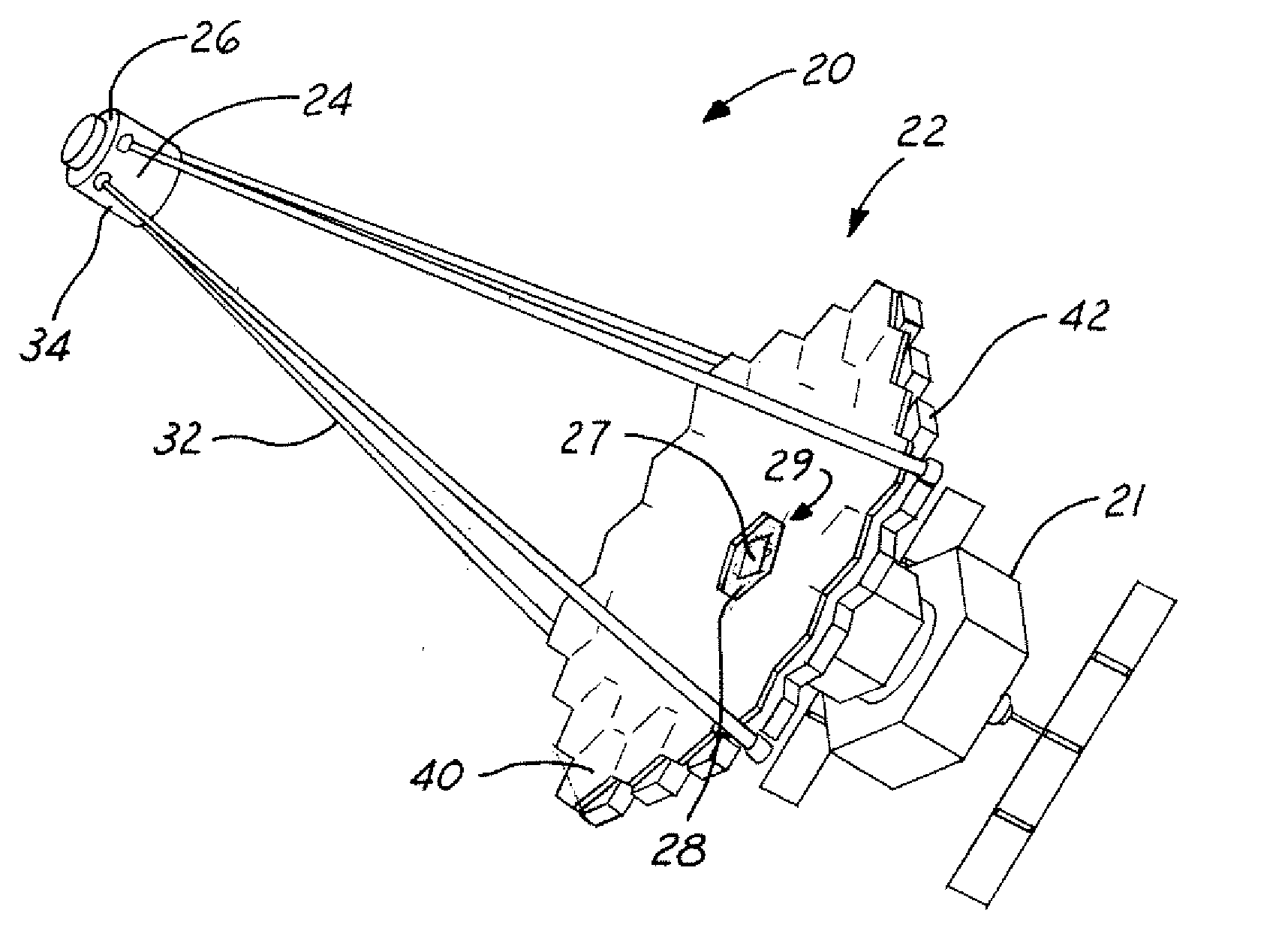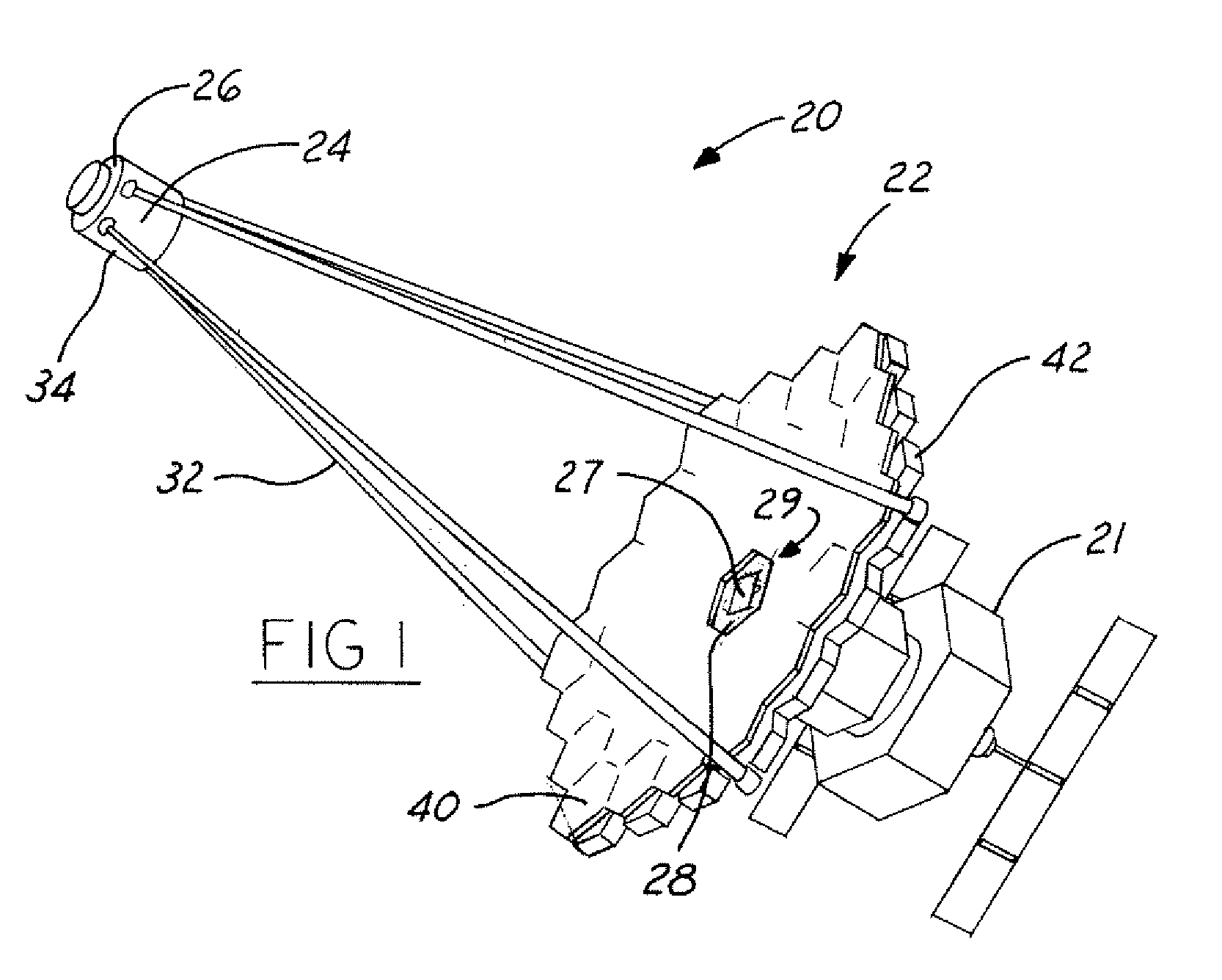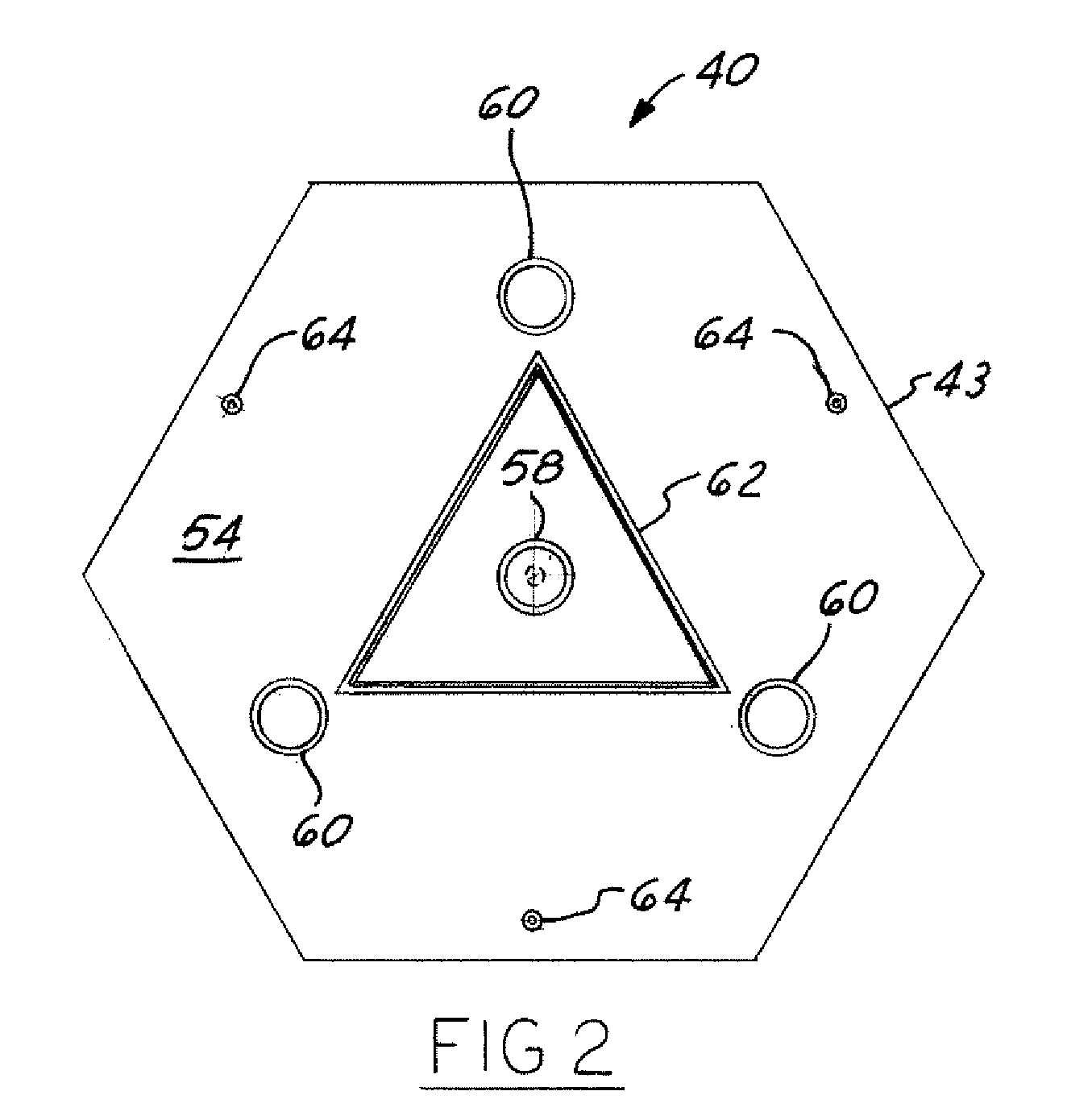Autonomously assembled space telescope
a space telescope and autonomous assembly technology, applied in the field of space optic systems, can solve the problems of not being fully or easily tested on earth, not yet being accomplished, and not being able to fully or easily support optical or other components, so as to improve optical performance, improve cost efficiency, and improve resolution
- Summary
- Abstract
- Description
- Claims
- Application Information
AI Technical Summary
Benefits of technology
Problems solved by technology
Method used
Image
Examples
Embodiment Construction
[0023] Referring now to FIG. 1, a reflecting telescope having a filled aperture design is shown generally as 20, herein shown contained on an orbiting satellite 21. Infrared and visible radiation from an astronomical object (e.g., a star) is collected, reflected and focused by a primary mirror 22 (preferably concave) towards a smaller secondary mirror 24 (preferably convex). Just before it gets to the focus the smaller secondary mirror 24 at the top 26 of the telescope 20 reflects this steeply converging beam of radiation and directs it downwards, now converging much more slowly, through a central hole 28 in the primary mirror 22 to an optical beam path 29 including an optional tertiary mirror 27, below, which directs it to an instrument focal station (not shown) contained within the satellite 21, wherein an onboard computer converts the data into a form that can be beamed to earth via communications satellites. The secondary mirror 24 has a support side surface 34 to which is coupl...
PUM
 Login to View More
Login to View More Abstract
Description
Claims
Application Information
 Login to View More
Login to View More - R&D
- Intellectual Property
- Life Sciences
- Materials
- Tech Scout
- Unparalleled Data Quality
- Higher Quality Content
- 60% Fewer Hallucinations
Browse by: Latest US Patents, China's latest patents, Technical Efficacy Thesaurus, Application Domain, Technology Topic, Popular Technical Reports.
© 2025 PatSnap. All rights reserved.Legal|Privacy policy|Modern Slavery Act Transparency Statement|Sitemap|About US| Contact US: help@patsnap.com



